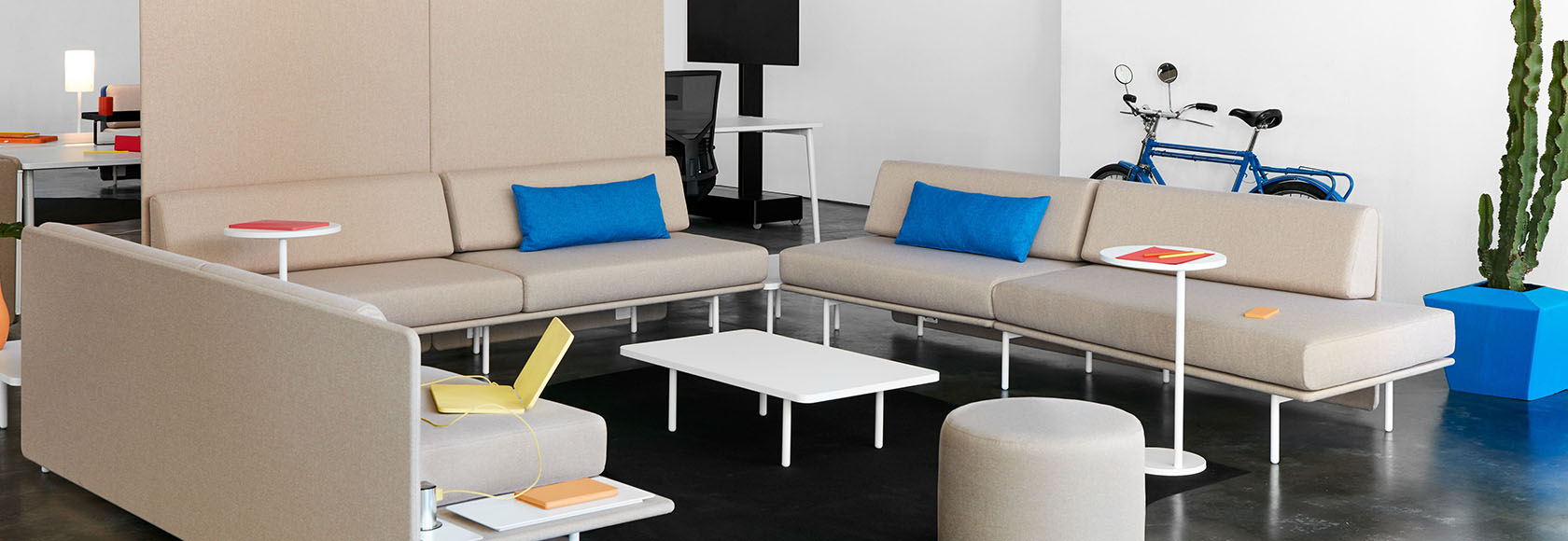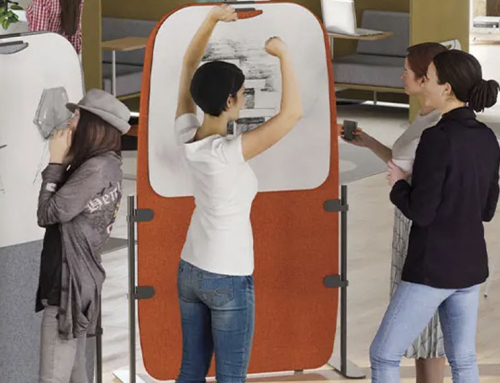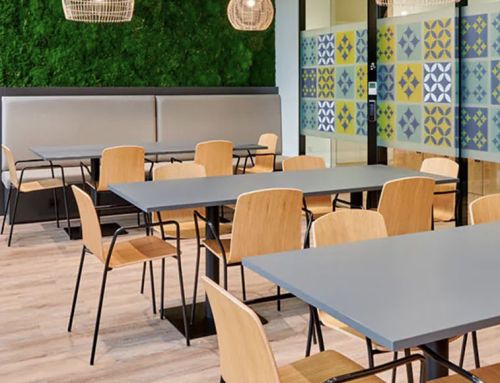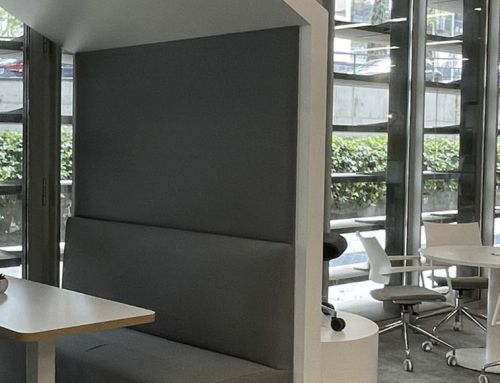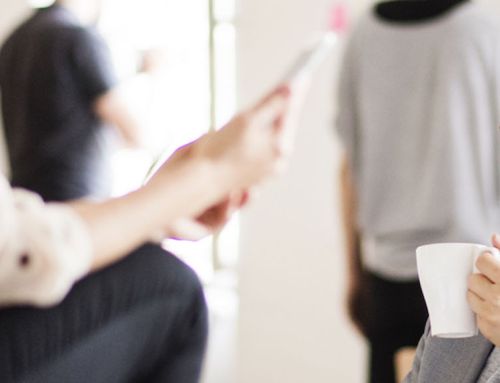Three new spaces in today’s offices are redefining the new workplace. As our latest ebook describes, we can talk about 12 key scenarios, which we at Ofita group into three areas: red, blue and orange. In two previous posts, we talked about the blue ones, the most private and for concentration, and the red ones, the noisiest and most collaborative.
What determines the use of a certain space: the purpose of the workplace and the different profiles of the users.
- The purpose of the workplace: concentration, collaboration, (remote or face-to-face? agendised or spontaneous?) learning, socialising or connecting with the brand, for example.
- The use of each space is also conditioned by the different professional profiles that coexist in the office; that is, with the different people who live in this city: its inhabitants (they spend most of their time at their workstation), the guests (they go to the office frequently for specific tasks that cannot be done remotely, and when they go to the office, they move around the different spaces depending on the task at hand) and the digital nomads (they rarely use the office, they only go to the workplace to exchange information and attend meetings).
In this article, we talk about “orange spaces“, those that are neither “cold” nor “hot”, which visually mark and transmit the route and spatial organisation of the office. They encourage face-to-face meetings and more spontaneous collaboration: the reception, the park, the boulevard and the soft seating areas.
New office spaces are coming on strong
We have already talked about the reception area, so let’s focus on the other three “orange spaces”.
The boulevard
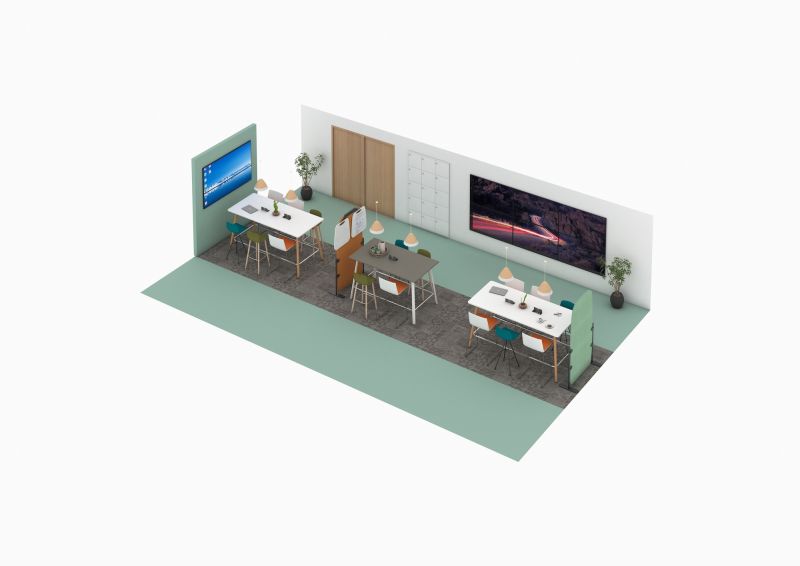
The Boulevard is the main circulation route of the office; it connects employees between them and the different space. To this main role we can add another one highly valuable with respect to office efficiency; the capacity to favour casual encounters.
In order to support these casual interactions we incorporate high tables with stools for example. Employees can quickly connect with their laptops or talk with their peers.
It is common to have these areas are decorated with fountains, lockers or printing areas that always favour casual conversations.
It is a natural ecosystem for two citizens: the visiting employee and the nomad.
The Park
The Park is the oasis of the office. The space – outdoors or indoors- where employees can relax and build back energy in a natural environment.
This attractive and comfortable environment is also an ideal space for socialization and casual exchange of ideas and of course for individual work at specific times. Because in this community any place can become a workplace. Its use will depend on the activity the employee is going to develop at any
given time.
A water element is a great incorporation to improve the sensorial experience but if budget were short, the simple noise of water can reduce stress.
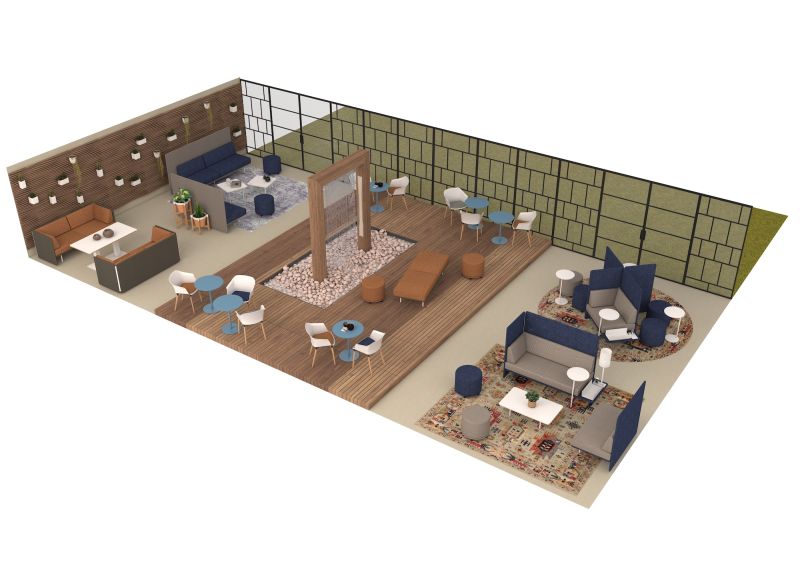
Soft-seating environments
Soft-seating represents the perfect place for casual and informal interactions. These are very popular areas in catering and leisure places and we have discovered that this also works in workplaces.
Having a soft-seating space to get away from your normal workplace, having a more colloquial meeting with a peer, making a quick call or any other individual task is an option that benefits both employees in terms of wellbeing and companies in terms of productivity.
These seats are not only comfortable but also functional; they do an incredible work when absorbing noise if collaboration raises the volume.
Soft-seating areas are conceived specifically for personal collaboration without using technology.
There are no screens but enough space and connections for laptops, tablets, mobiles… And space for a cup of coffee!
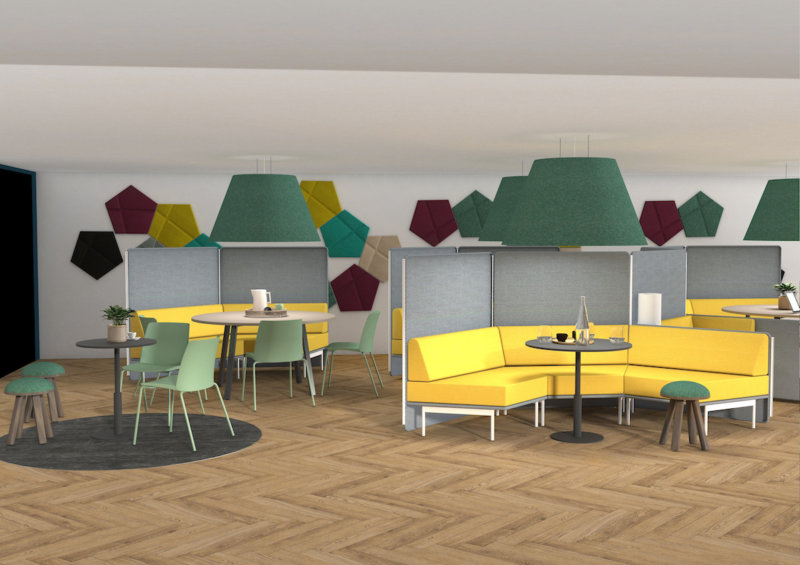
A space to socialise, collaborate, concentrate, learn or relax. Whatever they are looking for, workers – residents, guests and digital nomads – will find in the new offices the perfect place for them to work in the best conditions. And Ofita has specific furnishings for each of these spaces.
